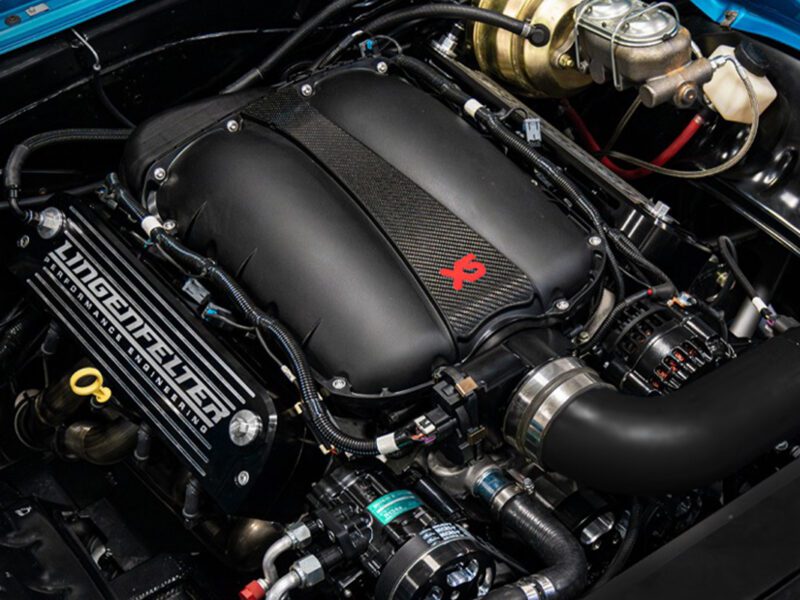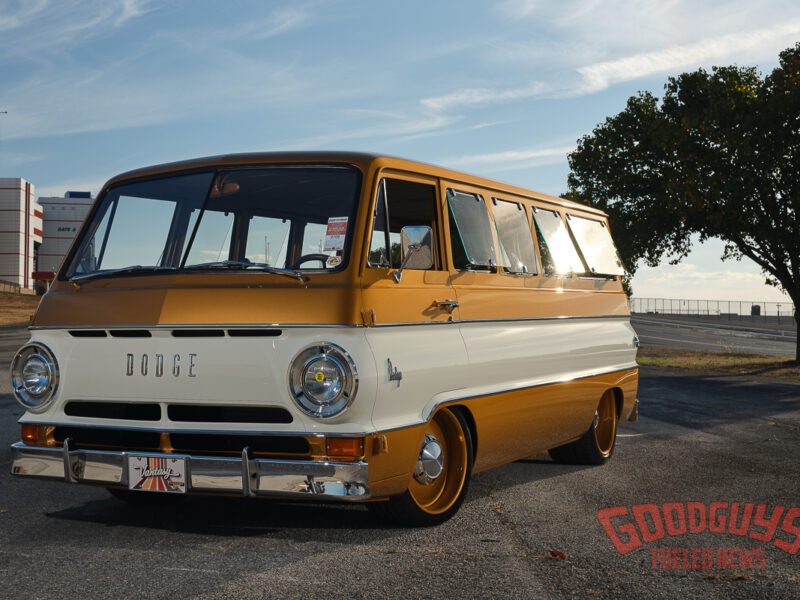Disco Style, Rock Power
Disco-Era Rides that Could Rock with Modern Horsepower
Photos Courtesy of Chrysler, Ford, and General Motors
The Seventies witnessed the great rise of disco along with a murky decline of American horsepower. Automakers made up for any performance shortages with maximum style as personal luxury achieved international designer status and the custom van craze ethos made its way onto sporty compact cars. The unbridled horsepower and late-Sixties space shot frontier performance settled into personally focused comfort and style but if the V8 was dead, then long live the V8.
Far removed from its late-Seventies near extinction, the high-performance American V8 is back and making well over 800 horsepower in production cars. As the big three are making this newfound performance available in crate engine and even turnkey powertrain swap form, there has never been a better time to bring all the avocado paint and plush velour of the disco era together with an MC5 level of high-performance V8 rock and/or roll.
Chevrolet Corvette: Peak Seventies Playback

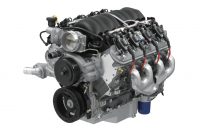
Chevrolet Performance LS3 crate engine
America’s sports car changed with America moving into the later Seventies. As lapels got wider and mood rings displayed full mellow moving into peak disco, what was a higher-strung sports car matured into a grand touring machine. Potential mid-mounted fire breathing rotary engine Corvette power would not come to pass and the small block Chevrolet V8 became the sole powerplant. Performance climbed from an emissions-cobbled 165 horsepower in 1975 to an optional 225 horsepower in 1979, when the redesigned for its Silver Anniversary Corvette sold in record numbers.
Embracing era-defining Corvette style and updating any performance shortcomings with a two-fold increase in late-Seventies horsepower levels is a modern possibility thanks to Chevrolet Performance. Swapping in an LS3-powered E-Rod package would keep things 50-state simple and transform any disco-era emissions woes into maximum 3-pedal Corvette entertainment. The LS3 V8 is rated at 430 horsepower all day and the manual transmission E-Rod Cruise & Connect powertrain features a T56 Super Magnum 6-speed manual, associated electronics, controls, hardware and emissions goods. Mood ring sold separately.
Lincoln Mark V: Bill Blass Coyote Edition
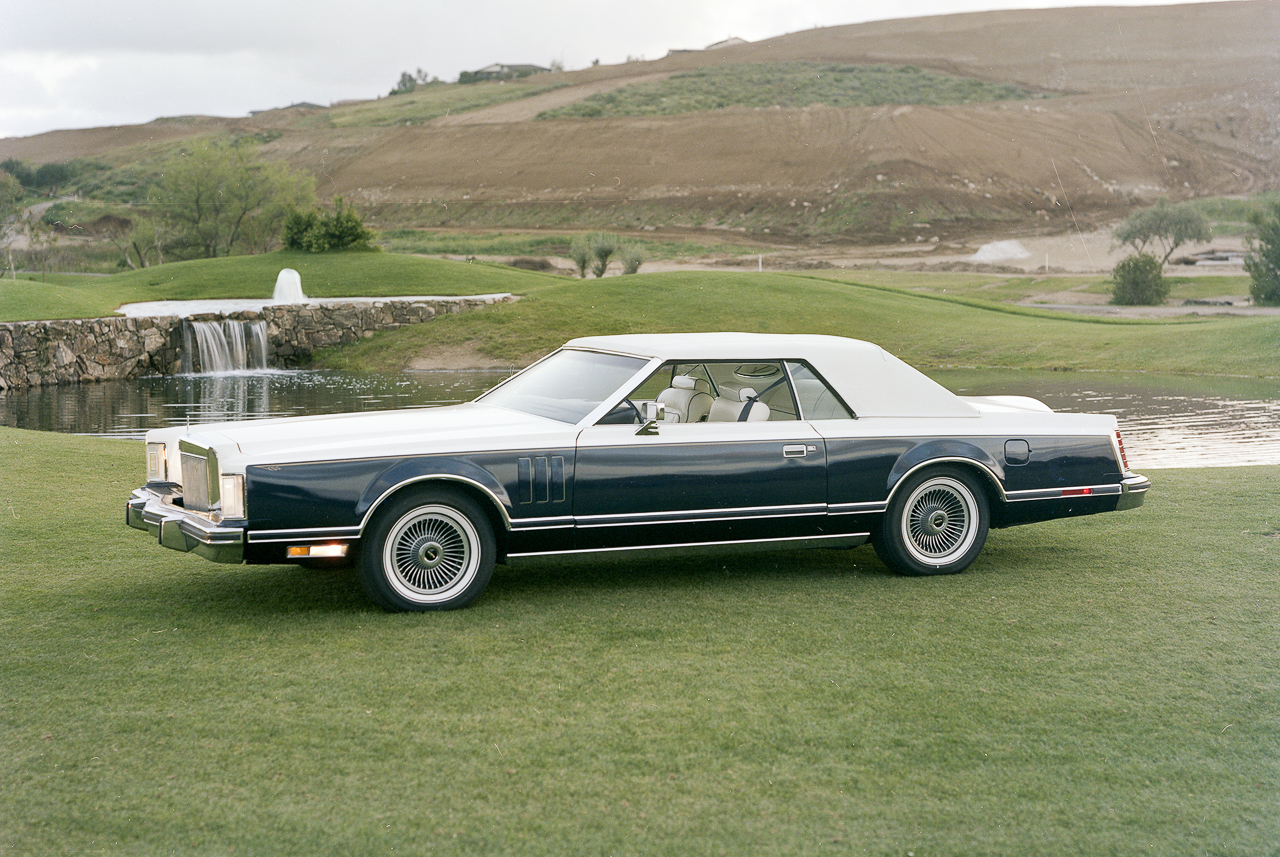
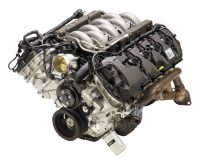
Ford Performance Coyote 5.0-liter V8 crate engine
Lincoln rolled through the Seventies with unabated luxury. The long hood and maximum appointments of the Continental Mark V floated into 1977 as Boston had More than a Feeling and Abba unleashed its Dancing Queen. Lincoln went all in on Continental haute couture with a series of designer edition Marks from Hubert de Givenchy, Emilio Pucci, Cartier and Bill Blass. The optional 460 cubic inch V8 was good for just over 200 horsepower in 1978 but gone altogether by 1979 so our money is on finding a mint white over midnight blue 1979 Bill Blass Continental Mark V and adding contemporary performance to the classic experience.
An all-aluminum 435 horsepower 400 ft-lb of torque version of the 5.0-liter Ford Performance Coyote crate engine backed up by the all-new Ford 10-speed automatic transmission could double the stock Mark V horsepower with linear quad-camshaft performance and seamless shifts through the rear wheels for a modernized Mark with peak Seventies designer style. If the 460-cubic-inch big block Ford fits under the hood in 1978, there should be a way to install a Coyote crate engine and follow the twice as much horsepower is a twice as good formula for engine transplant success. Bill Blass cufflinks sold separately.
Pinto Cruising Wagon: Turbo Entertainment
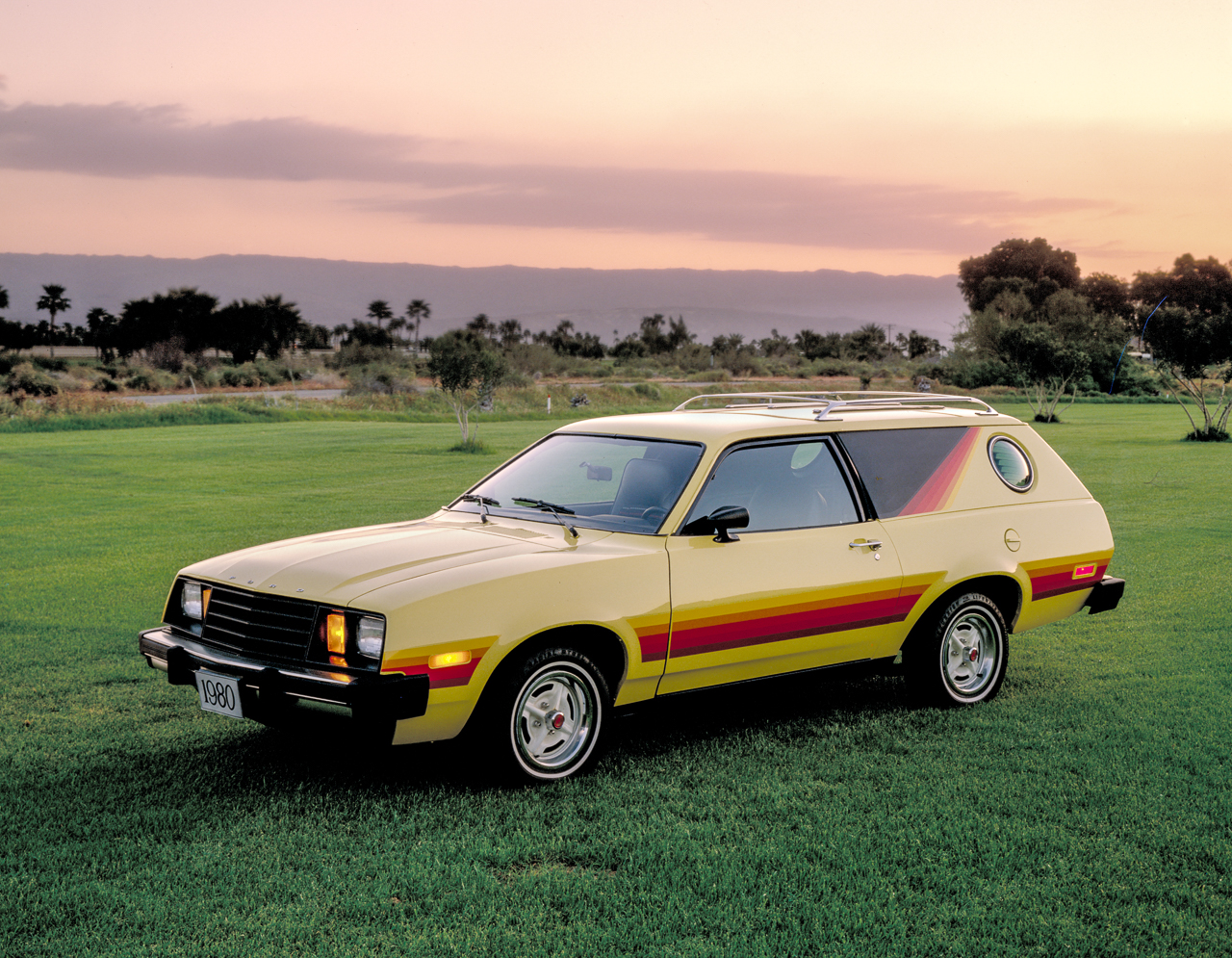
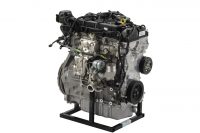
Ford Performance 2.0L I-4 crate engine
The compact Pinto hit peak Seventies when Ford tapped into custom culture iconography and created the 1976 Pinto sedan delivery concept. The resulting production Pinto Cruising Wagon was only slightly less over the top. The standard Pinto 4-cylinder kicked out a respectable 89 horsepower for 1977 and the optional V6 was only good a little more at 93 horsepower. Either engine was good enough the get the 2,500 or so pound wagon moving, but an avocado green Pinto Cruising Wagon with slot mags, stripe package and vacuum formed bubble windows could rock modern turbocharged power from the Ecoboost Mustang playbook.
As the Seventies Pinto SOHC 2.3-liter 4-cylinder evolved to deliver respectable performance in fuel-injected and turbocharged trim under the hood of the SVO Mustang and Merkur XR4ti, we would turn to the Ford Performance parts bin for an Ecoboost turbocharged 4-cylinder descendant and back it up with a 5-speed manual transmission for maximum 3-pedal compact sport wagon action. Ecoboost 4-cylinder crate engines are available in 2.0-liter 252 horsepower or 2.3-liter 310 horsepower versions, either of which would make for a Pinto Cruising Wagon with more than twice the original performance that could light up the tires on its 13-inch slot mags with smoky abandon.
Chrysler Imperial: Luxury Crown

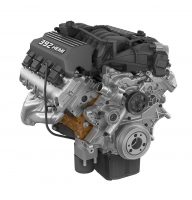
Mopar 392 6.4L Gen III Stroker Engine
Disco might have been heading into the greatest hits compilation phase of its popularity curve moving into the early Eighties but Chrysler was not about to let go of its Imperial promise of top flite personal luxury. In the midst of a financial crisis and K-Car production, the Chrysler Corporation brought back the Imperial for 1981 on the Volare-Cordoba M-platform with clean yet daring style and maximum luxury. Choice of plush velour or Mark Cross leather upholstery in the loaded interior was accented with Cartier crystal ornamentation, but even a blue-on-blue Frank Sinatra edition Imperial was ultimately not enough and 1983 marked the last of the rear wheel drive Imperials.
The only available Imperial engine for both years was the LA-series small block 318 cubic inch V8 that even with fuel injection mustered a meager 140 horsepower. Room for improvement makes the bustle back Imperial a perfect candidate for a 6.4-liter Mopar Hemi crate engine transplant good for 485 horsepower backed up by contemporary TorqueFlite 8-speed automatic. The resulting three-fold performance increase would be worth any fitment and technical challenges. Ordering up a Mopar Performance engine kit with PCM, throttle pedal, and associated wiring could help the digital LED instrumentation developed by Apollo program engineers converse with modern engine control electronics.
AMC Matador: Choose Your Burgundy
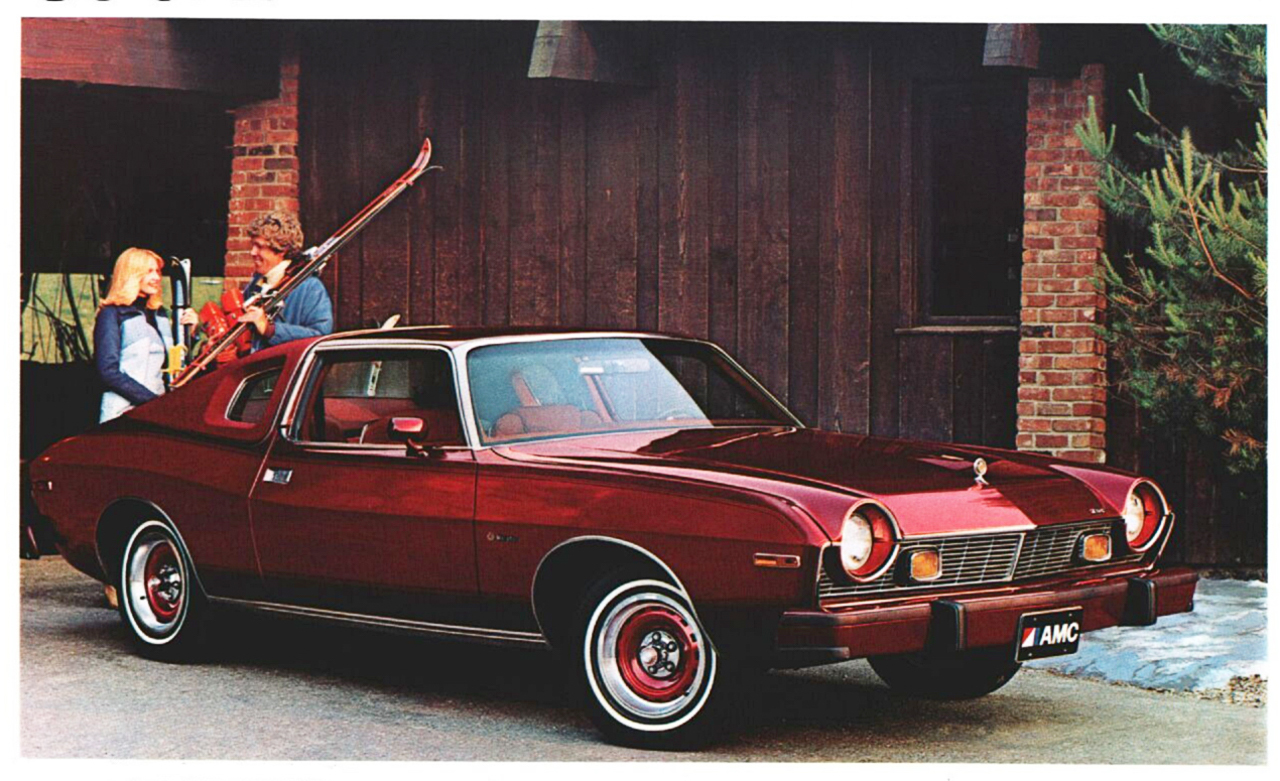
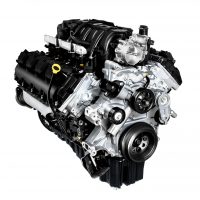
Mopar 345 5.7L Gen III Hemi crate engine
The AMC Matador was unfortunately discontinued before it had a chance to really drive into the disco era, but as the ski toting couple in this Seventies-infused view from the 1978 AMC brochure shows, the burgundy-on-burgundy Matador coupe was way ahead of the Eighties burgundy popularity curve. Standard luxury and peak Seventies style were not enough to save the Matador and it drifted out of the AMC lineup in 1979 as the Bee Gees falsetto hit Tragedy climbed the Top 40 chart. That the 360 cubic inch AMC V8 could only kick out 140 horsepower could not have helped the Matador cause.
As AMC and Chrysler subsequently became one, the Mopar Performance Hemi V8 crate engines could be a familial engine swap contender. Alternatively, a salvaged Pentastar V6 with 8-speed automatic transmission half cut setup from a wrecked Charger or Challenger along with the installation of an aftermarket supercharger system like a twin-screw Sprintex could result in road-going Matador glory. That burgundy-on-burgundy Matador with a 300-plus horsepower supercharged Pentastar V6 power and crisp shift automatic could be a grand touring contender with Seventies AMC style. Turtleneck and aerosol can of Dry Look for men not included.



